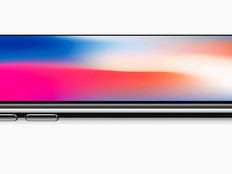Wireless HD Video Takes Off
Amimon, an Israeli startup with offices in Santa Clara, Calif., and Tokyo, has introduced a technology that enables wireless transmission of high-definition video streams. The company’s wireless HD interface (WHDI) may eliminate the need for wires while preserving the quality of the video stream.
Because most wired connections between video sources and displays rely on delivery of uncompressed video, the company’s goal has been to develop a wireless interface that would enable uncompressed video streaming, preserve the quality of wired links and offer a viable wireless alternative. Amimon’s wireless modules, which use the company’s base-band chipsets, can deliver uncompressed HD audio and video files in real time to distances of up to 30 meters through walls and up to 60 meters within line of sight, maintaining wire-equivalent quality and robustness.
Several companies have proposed wireless technologies for video transmission that use data compression. But in addition to the quality loss that comes with these solutions, compressed output is more susceptible to theft. Liability is also problematic because displays often don’t support the specific video compression/decompression associated with the compressed video stream. This causes compressed video formats to be unavailable as an output format for most consumer electronic video devices.
Pack It In
According to Amimon, solutions that apply real-time compression to uncompressed output aren’t practical because they come at a cost of significantly reduced quality, additional latency and high price. Therefore, Amimon has pursued a different approach: WHDI is based on a technology in which the video coding and modulation are jointly optimized.
The WHDI chipset supports most video resolutions, up to 720 x 1080 pixels (including Extended Graphics Array, or XGA), with no line of sight required between the transmitter and receiver and with latency of less than 1 millisecond. This means the video can be streamed over a standard, 20-megahertz wireless LAN, reaching a speed of 1.5 gigabits per second. The chip also allows delivery of uncompressed 1,080-pixel HD content at a rate of 3Gbps through a 40MHz channel.
In a wireless modem, all bits are treated equally: They all get the same level of protection from channel impairments. In video, however, different bits are of different importance; the effect of an error greatly depends on which bit is corrupted.
For example, in a stream of 8- or 10-bit numbers, each representing the primary color value of a given pixel, an error in the most significant bit (MSB) will have greater visual importance than it would in any of the other bits. A wireless modem will either protect the MSB too little or the least significant bit (LSB) too much, resulting either in inefficient use of channel capacity or in a low-quality video link.
Bit by Bit
The WHDI exploits the bit-importance hierarchy. It takes the uncompressed HD video stream and breaks it into elements of importance, providing each with the appropriate level of protection. These elements are mapped onto the wireless channel, and those with more visual importance get a greater share of the channel resources and are transmitted in a more robust manner. Allocation of channel resources can include setting power levels, spectrum allocation and coding parameters. The result of this approach is that errors in the wireless channel are unnoticed by the human eye because they affect less important bits. In this way, very high rates of video information can be transmitted without any visible defects.
“Wireless video has been talked about for many years, but it never became a reality,” says Amimon’s vice president of marketing, Noam Geri. “It hasn’t been practical to deliver it without compression, until now.”
The company is working to integrate its technology into consumer electronics: DVDs, gaming consoles, projectors, LCDs and plasma screens. These devices could all be paired with Amimon’s technology to create an all-wireless home or office, Geri says. According to the company, leading manufacturers are working to design televisions with built-in WHDI capabilities. A standalone wireless HD Multimedia Interface (HDMI) dongle also will be available soon, allowing consumers to wirelessly connect their existing televisions, projectors and monitors.
Amimon expects WHDI-compliance to push up the price tag of a television by about $200; WHDI modem adapters are expected to cost $300 to $400 a pair. Geri predicts prices will drop dramatically over the next few years. A WHDI-based television ultimately will cost only about $10 more than a traditional TV, and adapters will cost about $60, Geri says. “Consumers should see initial WHDI-based products at the end of 2007, with a wide variety of WHDI-based consumer electronic products available in 2008.”






